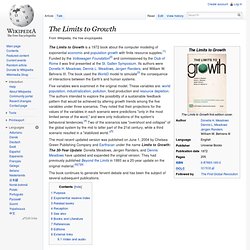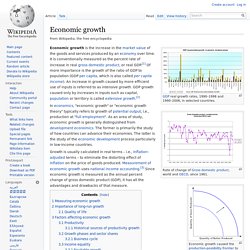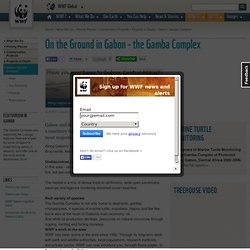

The Limits to Growth. Five variables were examined in the original model.

These variables are: world population, industrialization, pollution, food production and resource depletion. The authors intended to explore the possibility of a sustainable feedback pattern that would be achieved by altering growth trends among the five variables under three scenarios. They noted that their projections for the values of the variables in each scenario were predictions "only in the most limited sense of the word," and were only indications of the system's behavioral tendencies.[4] Two of the scenarios saw "overshoot and collapse" of the global system by the mid to latter part of the 21st century, while a third scenario resulted in a "stabilized world.
"[5] The most recent updated version was published on June 1, 2004 by Chelsea Green Publishing Company and Earthscan under the name Limits to Growth: The 30-Year Update. Purpose[edit] Exponential reserve index[edit] , but the rate of chromium consumption was growing at where: Economic growth. GDP real growth rates, 1990–1998 and 1990–2006, in selected countries.

Economic growth is the increase in the market value of the goods and services produced by an economy over time. It is conventionally measured as the percent rate of increase in real gross domestic product, or real GDP.[1] Of more importance is the growth of the ratio of GDP to population (GDP per capita, which is also called per capita income). An increase in growth caused by more efficient use of inputs is referred to as intensive growth. GDP growth caused only by increases in inputs such as capital, population or territory is called extensive growth.[2] In economics, "economic growth" or "economic growth theory" typically refers to growth of potential output, i.e., production at "full employment".
Growth is usually calculated in real terms – i.e., inflation-adjusted terms – to eliminate the distorting effect of inflation on the price of goods produced. Measuring economic growth[edit] Quality of life[edit] M. Our Common Future. Our Common Future, also known as the Brundtland Report, from the United Nations World Commission on Environment and Development (WCED) was published in 1987.

Its targets were multilateralism and interdependence of nations in the search for a sustainable development path. The report sought to recapture the spirit of the United Nations Conference on the Human Environment - the Stockholm Conference - which had introduced environmental concerns to the formal political development sphere. Our Common Future placed environmental issues firmly on the political agenda; it aimed to discuss the environment and development as one single issue. The Brundtland Commission's mandate was to:[1] The publication of Our Common Future and the work of the World Commission on Environment and Development laid the groundwork for the convening of the 1992 Earth Summit and the adoption of Agenda 21, the Rio Declaration and to the establishment of the Commission on Sustainable Development. See also[edit] On the Ground in Gabon - the Gamba Complex. Gabon and its newly created network of 13 national parks is a sanctuary for tropical wildlife, and boasts some of the most majestic scenery in the world.

Along Gabon's coast, towards the border of neighbouring Congo Brazzaville, lies the Gamba Complex of protected areas. Undiscovered, and stunningly beautiful. In this area - almost 1.5 times Yellowstone National Park - 10,000 people live, but are outnumbered by 11,000 forest elephants. The habitat is a mix of dense tropical rainforests, wide open savannahs, swamps and lagoons bordering deserted ocean beaches. Rich variety of species The Gamba Complex is not only home to elephants, gorillas, chimpanzees, 4 species of marine turtle, manatees, hippos and the like, but is also at the heart of Gabon's main economy: oil. And while oil production declines, pressures on natural resources through logging, hunting and fishing increase. WWF's work in the area WWF has been active in the area since 1992. Gamba Complex - the area. Dams and Development Project.
FSC: Startpage -Forest Stewardship Council. Convention on Biological Diversity. Not Another Nature Film. United Nations Framework Convention on Climate Change. The Story of Stuff